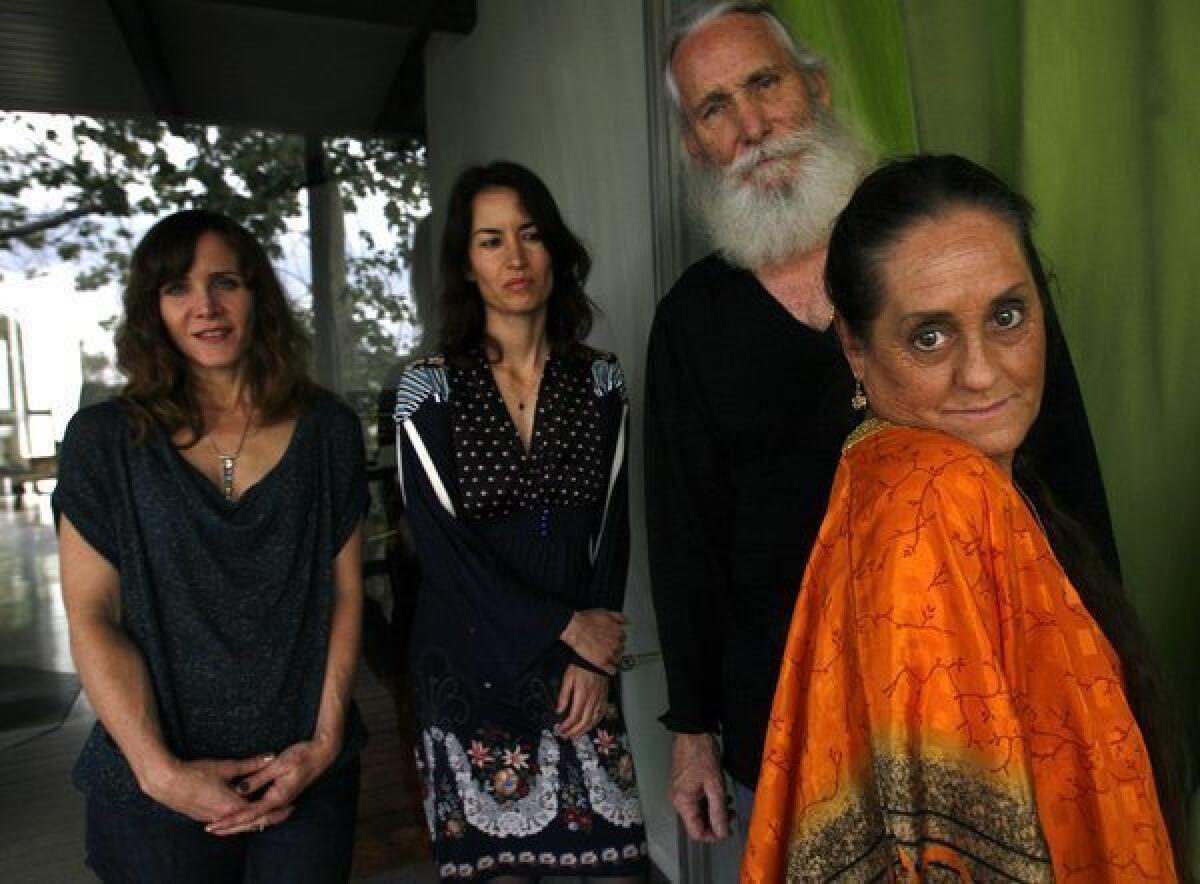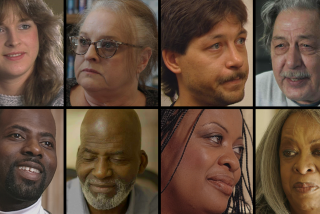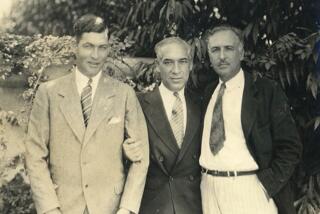‘The Source Family’ documentary draws an L.A. crowd

- Share via
It’s a quintessential only-in-L.A. story, one that combines sex, drugs, rock and roll, glamour, money, celebrity, hang gliding, health food and a homegrown spirituality. The new documentary “The Source Family” looks at the group of the same name, who for a brief moment in the early 1970s seemed to achieve their ideal of radical utopian experimental living.
The Source Family was led by Jim Baker, a successful Los Angeles restaurateur who came to be known as Father Yod. A judo expert, World War II hero and alleged bank robber (who was said to have twice killed men with his bare hands), Baker in 1969 opened a health food restaurant called the Source, with a menu “consciously prepared for the highest vibration.”
The Source is featured in Woody Allen’s “Annie Hall” — it’s where he orders “mashed yeast” — and the restaurant was also seen in the counterculture movies “Alex in Wonderland” and “Cisco Pike.” Musicians, actors, spiritual seekers and general glitterati all ate at the restaurant on the Sunset Strip, supporting what came to be the Source Family, an experiment in communal living and mystical spirituality with a few hundred followers.
PHOTOS: Hollywood backlot moments
“All roads crossed at the Source,” said Maria Demopoulos, who directed the documentary with Jodi Wille.
So it was that the Source Family returned to the Strip on Thursday night, with a local premiere of the film out on the pool deck at the Standard hotel. The screening was preceded by a “white magic ceremony” in the parking lot of the original restaurant across the street.
The crowd at the premiere was a multigenerational cross-section of the hipoisie, a snapshot of distinctly L.A. contemporary cultural collisions. A young man in a loincloth operated a digital camera as the singer Peaches, actress Ann Magnuson, musician Lili Haydn and comedians Neil Hamburger and Tim Heidecker weaved among some 40 former Source Family members. Old and young dressed alike. Aging libertine rockers down from their canyon lairs took their seats near Silver Lake art and design couples. A handful of young women frolicked naked in the pool. John C. Reilly was there.
The film is playing this week at the Cinefamily on Fairfax Avenue, which is featuring a pop-up restaurant on the back patio serving original Source recipes. The reformed version of the Source Family’s psychedelic rock band YaHowha 13 — its original self-released records are highly sought-after collector’s items — played Thursday and will perform again Saturday, with the week featuring demonstrations of other Source Family rituals, specially selected short films and a Source-inspired fashion show planned for this Thursday.
The Source Family’s eye for glamour helped set them apart from the more stereotypically grubby image of cults and communes. Baker, who stood over six feet tall with flowing white hair and beard, would sometimes be seen in a white three-piece suit with a fedora and cane; he drove a white Rolls-Royce. In one moment of archival footage in the film, Baker is strolling across Sunset Boulevard against a don’t walk sign, stopping traffic with his entourage of young, beautiful women.
“There were people who weren’t gorgeous who were in the group too,” said Wille, “but the beautiful people were the ones who got photographed most of the time.”
The movie grew out of the 2007 book “The Source: The Untold Story of Father Yod, Ya Ho Wa 13 and the Source Family,” by Isis Aquarian with Electricity Aquarian. (The two are not related — many original members of the group legally changed their names.) Wille edited and published the book and, after deciding to launch a documentary film project, she reached out to Demopoulos, a commercial director and longtime friend, to participate.
Though there are recent interviews with former Source Family members and others in the film, it is the extensive archival imagery that best captures the heady vibes of those times. (“Everybody’s a babe!” exclaimed a young woman at the premiere Thursday.)
Some former members talk in the documentary of their disillusionment as Father Yod shifted his beliefs to take on multiple “spiritual wives” and pushed further into exploring “sex magic.” The film doesn’t shy away from those things that might give one pause in celebrating a middle-aged man intent on surrounding himself with young women (and sometimes underage girls).
“Our goal for the story was to be sure we’re telling a complete history of the Family, that we’re getting very divergent points of view in there,” said Demopoulos. “They’re all witnessing the exact same moment, but they’re all processing it very differently.”
“What’s truly fascinating is what the people got out of it and what they took with them,” said Wille. “The ones who are around to tell the tale now, the vast majority say it was the greatest and most important experience of their lives.”
The Source Family had decamped to Hawaii when Father Yod declared in August 1975 that he would go hang gliding for the first time. His true intentions are unclear — Demopoulos called it “a soft suicide” though Isis Aquarian and Electricity Aquarian strongly refute that — but he crashed and died soon after at age 53. This sent the group into a tailspin from which it never recovered, as members scattered.
In the wake of the Manson Family and Jonestown, the word “cult” became perhaps indelibly associated with malevolence, mania and violence. But Isis Aquarian is determined to reclaim the term.
“ ‘Cult’ means ‘culture,’ and we did have our own culture,” she said. “Nobody had to go outside of our frequency, what we called our circumvent force. We lived together, we worked together, we meditated together, we loved together, we did music together, we were a family. And we were able to do that because we didn’t want anything from anybody. We had our own culture happening.”
The Cinefamily will be giving a one-week run to the rare, Oscar-nominated 1973 documentary “Manson” after “The Source Family.” Though the Rolls-Royce rock-and-roll glamour of the Source Family forms an obvious distinction, that specter of darkness inevitably rolls in behind.
“If you look at the difference between us and the Manson Family,” said Electricity Aquarian, “we were based in love and wisdom. They were based in insanity, as far as I could tell.”
“When you talk to Source Family members today, it just shows,” said Wille. “There was obviously something very different going on.”
For Brian Baker, 27, grandson of Jim Baker and his pre-Source Family second wife Elaine, the scene Thursday night was a strange one. He was attending the premiere along with his grandmother and parents and noted that for his family the Source Family was but one chapter in his grandfather’s life.
He surveyed the mélange of people scattered across the pool deck, those of his generation mixed with those his parents’ age and older, all there to see the documentary. “It’s weird, but at the same time, it’s L.A. right?”
PHOTOS AND MORE
VIDEO: Upcoming summer films
ENVELOPE: The latest awards buzz
PHOTOS: Greatest box office flops
More to Read
Only good movies
Get the Indie Focus newsletter, Mark Olsen's weekly guide to the world of cinema.
You may occasionally receive promotional content from the Los Angeles Times.











